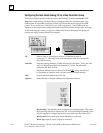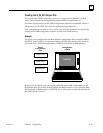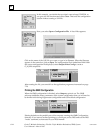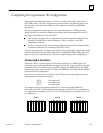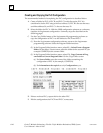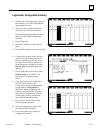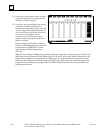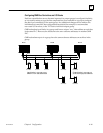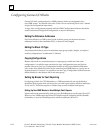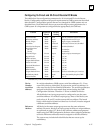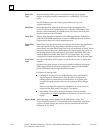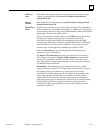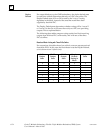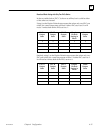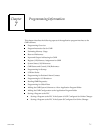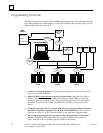
6
6-50 Genius Modular Redundancy Flexible Triple Modular Redundant (TMR) System
User’s Manual – March 1995
GFK-0787B
Configuring Genius I/O Blocks
Genius I/O block configuration for a GMR system is similar to configuration for a
non-GMR system. You should refer to the Genius Discrete and Analog Blocks User’s Manual
for specific configuration instructions.
A copy of the configuration prepared with the GMR Configuration Software should be
used for reference during block configuration, to assure consistency.
Editing the Reference Addresses
For Genius blocks in a GMR system, blocks within a group use the same reference
addresses in each of the redundant PLCs, so these are not changed.
Editing the Block I/O Type
Any discrete block that is part of a redundant input group (triplex, duplex, or simplex)
must be configured as a “combination” I/O block.
Copying Configurations
Because the blocks in a redundant input or output group usually have the same
configuration, it would be most convenient to copy configuration from one block to
another. However, the Copy Configuration feature of the Genius Hand-held Monitor
only works when blocks are online on the same bus (and GMR blocks in a group are on
separate busses). Of course, it is possible to use the Copy Configuration feature between
similar blocks on a bus that are not in the same group.
Setting Up Blocks for Fault Reporting
Configuring a block for CPU Redundancy = GMR automatically sets up the block to
send three fault reports when a fault occurs; one fault report each to serial bus addresses
29, 30, and 31. The blocks require no further setup to send multiple fault reports.
Setting Up Non-GMR Blocks to Send Multiple Fault Reports
Inputs-only blocks automatically send up to two Fault Reports to serial busses 30 and 31.
However, non-GMR output and mixed I/O blocks must be configured for Hot Standby
redundancy to send two Fault Reports to serial bus addresses 30 and 31.



